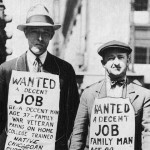Happy Monday! I hope you all had a pleasant Palm Sunday.
When I was a high school student, about age 17, the first real, academic history question that ever interested me was “What caused the Great Depression?” Not so much why it lasted so long (which, as I would later learn, is a separate question) but what caused the economy to crash in the first place? I wasn’t satisfied with memorizing 4 or 5 lines about the subject, enough to get the question right on the exam; I wanted to learn as much about it as possible. This is how I found the Austrian Business Cycle Theory. (I would eventually study history in college and write several 20+ page papers on the Austrian School).
Despite having left behind many of the right-libertarian political views of my early 20s, I remain convinced that the ABCT provides the most accurate macro-picture of how economies grow and how they crash. The best explanation of the ABCT I’ve ever seen is from Prof. Roger Garrison of Auburn University. I watched Garrison deliver this same lecture in person in 2008 and it’s stuck with me. There are, to be sure, lectures which are friendlier to the layperson. Garrison’s video can be a bit technical, and may require a second viewing, but for anyone who wants to understand what caused not just the Great Depression, but also the financial crisis of 2008, this video is indispensable. It’s also got some of the coolest Power Point animations I’ve ever seen.
“Before we can even ask how things might go wrong, we must first explain how they could ever go right.” – F. A. Hayek













